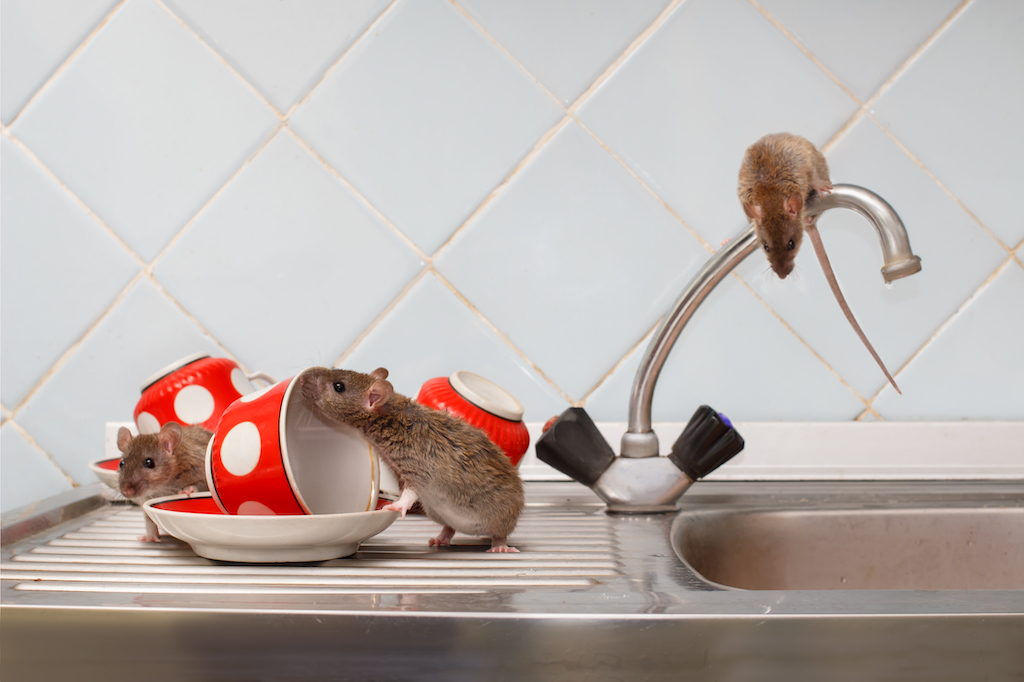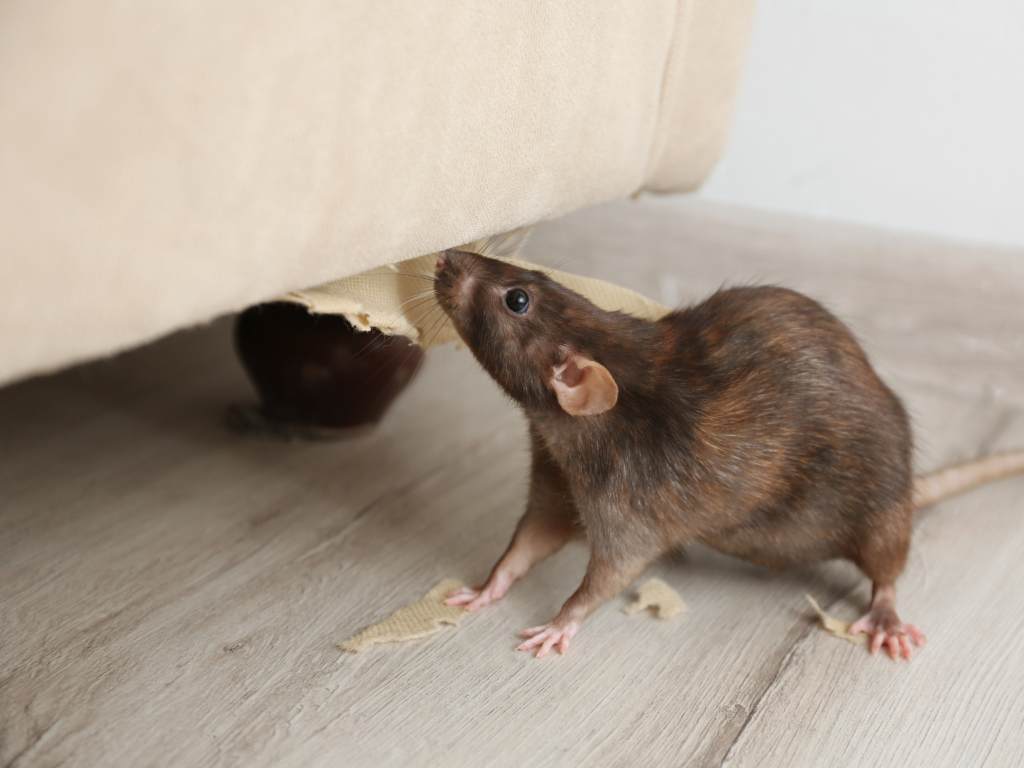Rodent Treatments in Florida:
Exterminator Services for Cape Coral and North Fort Myers
Florida’s year-round warm weather and high humidity create an environment where rodents thrive, posing challenges for homeowners and businesses alike. If rats or mice gain access to your property, they can reproduce quickly, chew on wiring or wooden structures, contaminate food, and stress out occupants who see or hear them scuttling through walls at night. In Cape Coral and North Fort Myers, property owners must stay vigilant against rodents seeking refuge and steady food sources, especially because mild winters in southwestern Florida rarely suppress rodent activity for long. This service page outlines why rodents flourish in Florida’s climate, the signals pointing to a possible infestation, and how a trained rodent exterminator provides rodent treatments that not only eliminate current populations but also fortify against re-entry. By responding swiftly when you notice droppings, gnaw marks, or rustling sounds, you preserve peace of mind and prevent structural or health complications.
Why Rodents Thrive in Florida

- Mild, Subtropical Climate
In colder states, prolonged freezing weather reduces rodent breeding for months. Florida’s mild winters, on the other hand, don’t force rats or mice into extended dormancy. They remain active most of the year, allowing continuous reproduction cycles. Even brief cold snaps fail to shut them down, so an unnoticed rodent presence can expand rapidly. - Abundant Food and Water
Rodents consume practically any organic matter—cereal boxes, pantry leftovers, crumbs, or scraps in open trash bins. Areas near canals, rivers, or with frequent rain provide ample water sources, as do slight leaks under sinks or condensation from air conditioners. When roaches or other small pests thrive, rodents might follow, feeding on them as well. Neglected yard debris or messy storage areas also create ideal feeding grounds. - Minimal Seasonal Slowdown
In many parts of the country, rodents experience population dips during harsh winters. Florida’s climate rarely dips below freezing for extended periods, so rodents experience few natural checks on population growth. Without consistent occupant vigilance, an initial small incursion of rodents can spread from attics to crawl spaces or from one building to neighboring structures. - Housing Growth and Movement
Cape Coral and North Fort Myers feature ongoing development—older single-family homes, new condos, and expanding retail areas. Construction disrupts rodent habitats, pushing them indoors if cracks around foundations or eaves remain unsealed. Meanwhile, occupant turnover, short-term rentals, and secondhand goods can transport rodents or their eggs from one property to another. - Continuous Food Access
From open garbage cans to leftover pet food, southwestern Florida’s casual outdoor lifestyles sometimes produce easy feeding opportunities for rats or mice. Barbecues, for instance, might leave behind scraps in yard corners, unknowingly inviting rodents to nest in nearby garages or under deck boards.
Signs Pointing to a Rodent Infestation
- Droppings and Urine Stains
Mouse droppings appear small, dark, and rod-shaped, usually left near food sources or along baseboards. Rat droppings tend to be larger. Fresh droppings have a moist texture, turning dull over time. Musty or stale odors in corners may indicate urine accumulations. - Gnaw Marks or Holes
Rodents chew incessantly to wear down their ever-growing incisors. Discovering shredded cardboard, bite marks on wooden beams, or small holes in food packaging reveals gnawing activity. Holes in walls near floors might confirm rodents forging paths to hidden nesting spots. - Nocturnal Scratching Noises
Mice and rats mostly move at night, foraging for crumbs or water. Faint squeaks, scuttling, or chewing from walls, attic spaces, or under floors during quiet nighttime hours strongly implies rodents are exploring. The location of these noises can indicate nest sites or runways. - Nests of Shredded Material
Rodents often build nests from paper scraps, insulation, or cloth. These plush piles might hide in seldom-used closets, garages, or behind large appliances. Paired with droppings and possibly leftover seeds or food bits, a discovered nest confirms active breeding. - Strange Pet Behavior
Cats or dogs may sniff intensely at corners, paw at baseboards, or remain fixated on what appears to be empty space if they sense rodent presence. Observing your pet’s heightened interest in certain walls or cupboards can lead you to droppings or gnaw marks.
Potential Consequences of Ignoring Rodents
- Health Hazards
Rodents can track bacteria, parasites, or viruses onto counters, pantries, and stored foods. Droppings might harbor pathogens harmful to humans if ingested or if they contaminate surfaces. Over time, these contaminants degrade indoor air quality and elevate health risks, particularly for children or those with respiratory issues. - Physical Damage
By gnawing on wiring or structural wood, rodents threaten building safety. Chewed wires risk electrical shorts or even fires, while hollowed beams weaken support. Repairing such hidden destruction can be costly if discovered too late. - Breeding Explosion
A pair of mice or rats can produce multiple litters in just a few months. Failing to address an early presence paves the way for a full-blown infestation, with rodents occupying multiple rooms or migrating to adjacent properties or walls. - Reputation Harm
In commercial settings—like restaurants, retail shops, or hotels—visible rodents can lead to immediate customer complaints, negative reviews, or potential health inspections. Swift rodent treatments protect brand image while keeping employees and patrons comfortable.

Why Professional Rodent Treatments Count
- Accurate Inspection and Species ID
A qualified exterminator distinguishes between mice, rats, or occasionally other rodent species, shaping targeted solutions. House mice differ from Norway rats or roof rats, each requiring unique trap placements or strategies. Pinpointing entry routes helps block subsequent invasions post-treatment. - Sealing Access Points
Rodent control merges interior elimination with external exclusion. Technicians often recommend patching foundation cracks, installing door sweeps, or sealing utility line gaps. Without closing these holes, newly minted rodents can replace those removed. - Effective Baiting and Trapping
Snap traps or multi-catch devices placed flush against baseboards exploit rodent movement patterns. Outdoor or indoor bait stations with rodenticides kill rodents returning to nests, enabling entire colonies to dwindle. By adjusting placements and baits, exterminators maximize success while minimizing occupant or pet exposure. - Sanitation and Environmental Adjustments
Experts not only remove rodents but guide owners on reorganizing clutter, securing garbage lids, and storing foods in sealed containers. Eliminating easy meals forces rodents to contact baits or traps. This synergy of occupant diligence and professional tactics ensures sustained results. - Follow-Up Confirmations
Because rodents reproduce quickly, verifying that new litters haven’t emerged remains critical. Scheduling a re-check after initial removal addresses potential re-infestations or small holdouts that might remain. Quick retreatment can finalize rodent elimination.
Methods an Exterminator Might Use
- Property Inspection
The exterminator examines possible rodent harborage—kitchens, crawl spaces, attics—looking for droppings, nests, or entry holes. Outdoors, they scrutinize yard perimeters, near AC units, or around sheds for gnaw marks or burrows. Documenting these spots helps shape the placement of traps and baits. - Trapping Inside
Snap traps remain a classic solution for mice or rats found indoors, placed along walls where rodents typically roam. Baits, such as nut butter or seeds, lure rodents into traps. Technicians regularly check these traps, discarding caught rodents to keep environments clean and reduce odor. - Bait Stations Outdoors
For exterior rat issues or to prevent re-entry, exterminators may install secure stations containing rodenticides. Rodents enter, feed on toxic bait, and return to their nests, leading to colony-wide reduction. Because the stations lock, children or pets can’t easily access the poison inside. - Exclusion and Sealing
Blocking off rodent highways ensures a long-term fix. Caulking cracks around vents, plugging holes with steel wool, or upgrading door sweeps stops new mice or rats from entering. Exterminators might also recommend capping chimneys or installing screens in certain ventilation openings. - Hygiene Recommendations
Lowering clutter in garages, discarding cardboard piles, and sealing pantry goods hamper rodent nesting and feeding. If owners store pet food outside or keep trash uncovered, roaches and rodents feast nearby. Changing these habits aligns occupant practices with professional solutions, reinforcing a rodent-free outcome.
Coverage Areas: Cape Coral and North Fort Myers
Cape Coral: A city of canals, scenic neighborhoods, and continuous tourism or occupancy turnover. Suburban sprawl combined with yard waste or older building cracks can entice rodents searching for leftover scraps. Regular property checks reduce the chance of rodents nesting behind walls or rummaging in pantries.
North Fort Myers: With a variety of suburban developments and rural pockets, North Fort Myers might see rodents crossing from yards or fields into newly built homes if gaps around foundations or eaves remain unaddressed. Maintaining yard cleanliness and prompt occupant vigilance hamper rodents from establishing near kitchens or attics.

Why Our Rodent Treatments Succeed
- Florida-Focused Expertise
Because of southwestern Florida’s mild winters, rodents require consistent year-round control measures. Our approach pairs occupant tips with thorough trap or bait deployments to handle near-continuous breeding cycles, rather than relying on cold to slow them. - Safe, Targeted Applications
Instead of widespread spraying or random bait placements, we investigate exactly where mice or rats nest or feed, thereby maximizing contact and reducing occupant chemical exposure. This deliberate usage spares children and pets while delivering lethal effects for rodents. - Preventive Mindset
Once rodents vanish, we emphasize occupant collaboration—sealing holes, discarding yard debris, storing food properly, and halting minor plumbing leaks. This synergy means pests lose favorable conditions, so they’re less likely to return. - Monitoring and Follow-Up
Post-treatment, we recommend scheduling checks in case newly born rodents appear from hidden eggs or pregnant females not captured initially. Swift re-treatments, if occupant sightings remain, secure the final eradication.
Next Steps
Has your pet fixated on corners, have you noticed shredded boxes near stored food, or heard squeaking behind walls at night? Contact us to learn more or schedule your service. Our rodent treatments in Cape Coral and North Fort Myers pair occupant education with professional exterminator solutions that address mice or rat colonies from top to bottom—covering nesting areas, travel routes, and potential re-entry points.
Prompt action stops rodents from multiplying, damaging wiring, and contaminating areas with droppings or urine. A proven combination of traps, baits, sealing cracks, and occupant hygiene upgrades ensures that these pests cannot recapture the territory they once held. By uniting robust technical methods with occupant diligence, southwestern Florida property owners stave off a rodent resurgence, preserving a safer, calmer indoor environment.
Sustaining a Rodent-Free Environment
Following thorough rodent removal, practical measures uphold a rodent-resistant property:
- Routine Cleaning: Vacuum and mop floors to erase crumbs. Keep counters free of leftover food or dirty dishes that feed roaches or rodents alike.
- Secure Storage: Transfer dry goods—like rice or cereal—to sturdy plastic or metal containers. Promptly close pet food bins after each feeding.
- Seal Trash: Use bins with tight lids. Avoid piling up recyclable materials or yard waste near exterior walls.
- Landscape Management: Trim shrubs away from building exteriors, remove yard clutter, and keep lawns mowed to deprive rodents of outdoor hiding spots.
- Periodic Inspections: Glance behind appliances or in corners for fresh droppings, shredded paper, or gnaw marks. If suspicious evidence arises, re-contact an exterminator quickly.
In southwestern Florida’s mild climate, occupant vigilance remains integral to success. Balanced, consistent maintenance discourages new rodent arrivals, while early detection of suspicious activity fosters swift solutions. By blending occupant engagement with professional rodent treatments, Cape Coral and North Fort Myers residents reclaim property comfort and reduce the risks rodents pose to daily life, health, and property value.
